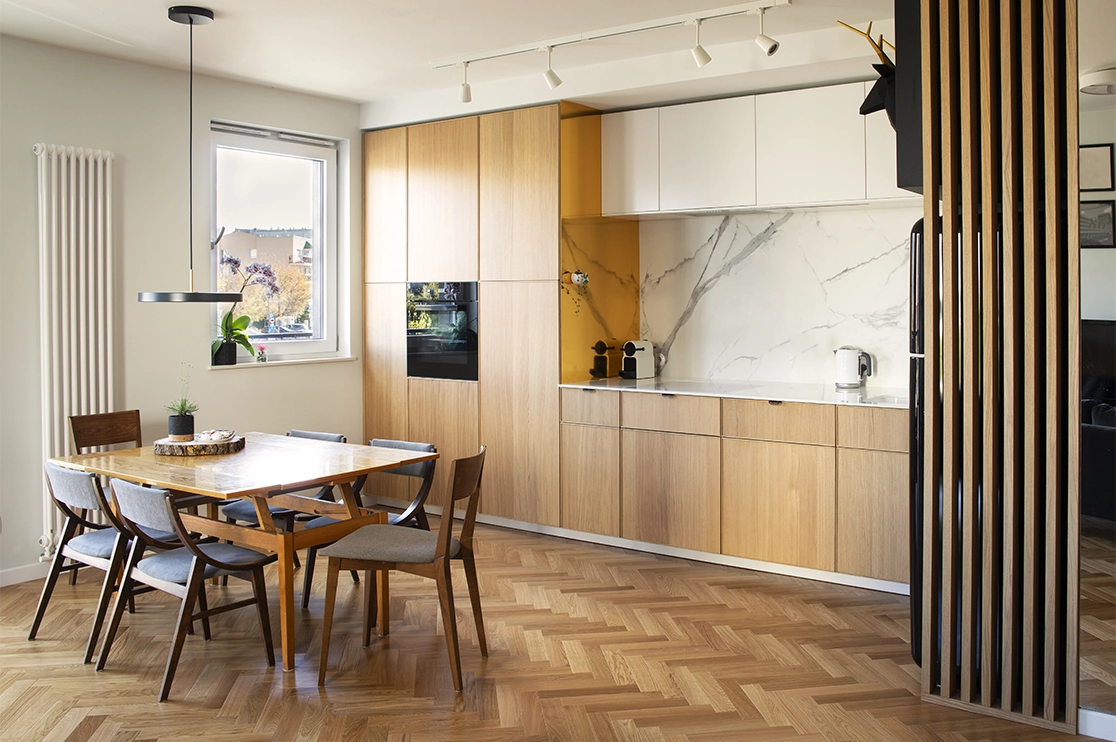Wood and woodworking have a fascinating role in human history and daily life, from benches for Anglo-Saxon monasteries in the 8th century to the table for your grandchild’s birthday cake. Even the most seasoned woodworkers and millwork shop drawing professionals may not know some of the more esoteric facts about woodwork.
In this article, we explore the wonderful world of wood and woodworking—it’s not just about custom millwork!
Introduction
There’s a reason wood became so popular as a material for furniture and building: it is light enough to move around, strong enough to last, and soft enough to work with. From small vendors to the finest furniture companies, you’ll rarely come across furniture sellers whose stock doesn’t contain at least a little wood.
There’s so much we still don’t know about what our predecessors used to sit on, sleep on, and build on. Having said that, some of the things we do know about wood and woodworking are pretty darn fascinating. Here are twenty of them that will blow your mind.
20 Fascinating Facts About Wood and Woodworking
- The terms “hardwood” and “softwood” don’t actually refer to the wood itself! Rather, they refer to the seeds, leaves, and structure of the trees. If you want to know which one would suit your needs better, read about the best types of wood for furniture.
- British oak trees can live for up to 500 years. But that’s not all – oak is so durable that it was seen as a prized material for building and decorating medieval grain barns and churches. One such church is the Lincoln Cathedral in Lincoln, England.
Indeed, unseasoned green oak was even used for shipbuilding. The warships Mary Rose and Grace a Dieu of Henry VIII were built almost wholly of oak, and so were most ships before the iron “Great Britain” came along. Entire forests of oak used to be reserved for naval shipyards.
-
The dovetail joint, which is used frequently now, predates much of written history, with the technique dating back to ancient Egypt. This joinery technique is used in woodworking and traditionally utilized to joint furniture. Dovetail joints are known for their resilience and can be used to join pieces of furniture without mechanical fasteners.
- Ebony is the darkest natural wood we know of, and is dense enough to sink rather than float in water. It can take a high polish, and was used in ancient India for images and sceptres.
Modern woodworkers use this elegant material for many things, but most commonly for small ornamental objects such as chess pieces, knife handles, piano keys and decorative items. However, it is also used for cabinetry and inlaying.
- Some scholars believe that the Egyptians were the first to “finish” woodwork, that is, place a protective sealant on wooden objects to preserve them. However, the composition of these finishes remains unknown.
- IKEA uses 1% of the world’s commercial wood every year. That’s a whopping 17.8 million cubic yards, or 13.6 million cubic metres.
Recommended Reading:
- Remember the pine furniture boom of the early 80s to late 90s? Softwoods were largely responsible for that, because they take wood finishes so well.
-
Biblical Hebrew does not clearly distinguish between the words “chair”, “throne” and “stool”. The same word refers to seating both with and without a backseat, and even this tends to become clear only within context. For example, we can infer that the priest Eli was sitting on a stool and not a chair since he broke his neck by falling over.
On the topic of chairs, here are 11 types of chairs that can elevate your space, whether you desire something that feels like a throne or just want to kick back with your feet up. After all, wood and woodworking are meant for use!
- The most expensive chair ever sold to date is the Dragons Chair (“Fauteuil aux Dragons”), designed by Eileen Gray, at approximately 28 million dollars. It was bought by Yves Saint Laurent in 2009 at an auction.
- According to many experts, traditional interior decoration in Japan has not altered much since medieval times. Major differences in modern Japanese design include sliding doors, which have replaced curtains or single-leaf screens, and matting, which is now extended to cover the whole of the wooden floor.
- You ever thought about how old the oldest surviving door is? One of the oldest ones ever found is a Neolithic one in Switzerland – 5,100 years old. It was located during a dig for the construction of an underground car park for an opera house in Zurich.
- You’ve heard of bonsais (artificially dwarfed trees and shrubs), but the world’s shortest naturally existing tree is arguably the dwarf willow, which lives in arctic and sub-arctic environments. Despite its name, it does not have the expected “tree-like” appearance.
- If you plan on reselling your property, don’t forget the architectural landscaping. Large, mature trees can increase the price of a home by about 7%. In high-income areas, the number is even higher, about 10–15%. However, if a tree is hazardous or in poor health, removing it can increase your property’s resale value.
Some trees that can help increase resale value include oaks, maples, ornamentals, elms and hickories. That is, trees that are low-maintenance, resilient, and look great.
-
Holly is considered the palest natural wood in the world. It is used to make brushes, inlay fine furniture, and even mimic white piano keys. You’ll find its 175 species growing around the world, with the largest numbers in Guiana and Brazil.
Traditionally, the beginning of Yuletide was marked by decking halls with boughs of holly, while today, its spiky leaves and bright red berries have become a seasonal industry.
- The period between 1880 and 1910 in the US is known as the Golden Era of Millwork, which saw a revival of the Victorian, Spanish, and prairie styles, among others. During this time, most buildings and interiors were made of wood. This wide use of wood was due largely to the manufacture of machinery, which made wood cutting and carving easier and in turn led to finer finished products.
-
The oldest surviving wooden building in the world is Horyu-ji temple in Ikaruga, Japan. It was constructed in 607 AD and included a five-story building called the Gojunoto. The oldest surviving wooden structure, however, might be a 7,200-year-old well found in the Czech Republic.
- Charcoal, which can be made with wood, is one of the first tools that humans ever used to create art. Around 30,000 BC, we began to use it as a pigment for drawing on cave walls. Prior to this, we used it primarily to provide warmth.
- While cupboards and other storage devices have been used around the world for thousands of years, cabinets as we know them originated in Italy during the late Renaissance. In the mid-17th century, inlaid cabinets became a speciality in southern Germany and Antwerp.
Recommended Reading:
- There is understandable confusion between the terms “timber” and “lumber”, and it can partly be attributed to regional differences. In the US and Canada, timber refers to felled or standing trees, while lumber refers to wood that has been milled and cut into planks or boards. In the UK and other commonwealth countries, the term timber is used for both types.
- Trends in modern woodworking include wooden signs for interior decor, inlaid woodwork, and the use of epoxy resin to create fanciful images.
Conclusion
The history of wood and woodworking is truly fascinating, and we have only covered the tiniest sliver of it in this article. We live in an exciting period for millwork, cabinetry and other woodwork, so keep an eye out for future trends and innovations.
Of course, the finest custom wood design, casework, cabinetry and countertops are brought to life with millwork shop drawings and cabinet shop drawings.
BluEntCAD’s millwork drafters cater to millwork shops, cabinet makers, casework companies, furniture manufacturers, homebuilders, engineering companies, AWI members, and kitchen remodelers. Browse our portfolio to see how we’ve helped other companies like yours.
Ready to make your wood and woodworking project a success with millwork shop drawings? Contact us now!
Maximum Value. Achieved.







 7 Stunning 3D Kitchen Design Ideas for a Perfect Remodel
7 Stunning 3D Kitchen Design Ideas for a Perfect Remodel  Outdoor Kitchen Designs and Cabinetry for Amenities Beyond Interiors
Outdoor Kitchen Designs and Cabinetry for Amenities Beyond Interiors  Kitchen Cabinet Trends Your Millwork Drafter Must Consider for Remodeling Projects
Kitchen Cabinet Trends Your Millwork Drafter Must Consider for Remodeling Projects  7 Kitchen Cabinet Grades for Remodeling
7 Kitchen Cabinet Grades for Remodeling
nice
Thanks Kai! If you would like us to cover any other topic, please let us know at cad@buentcad.com
amazing
Thanks Tony! If you would like us to cover any other topic, please let us know at cad@buentcad.com